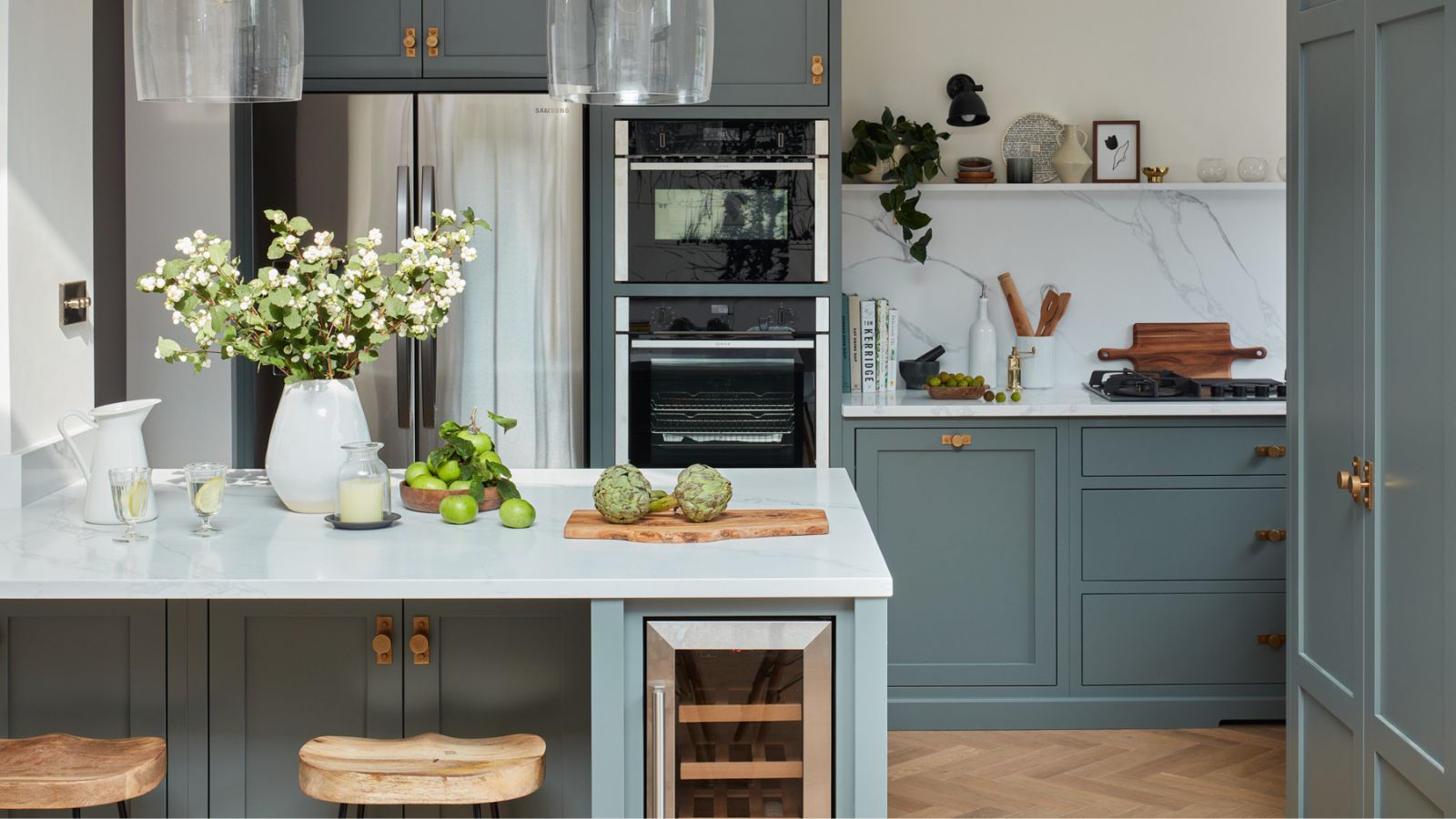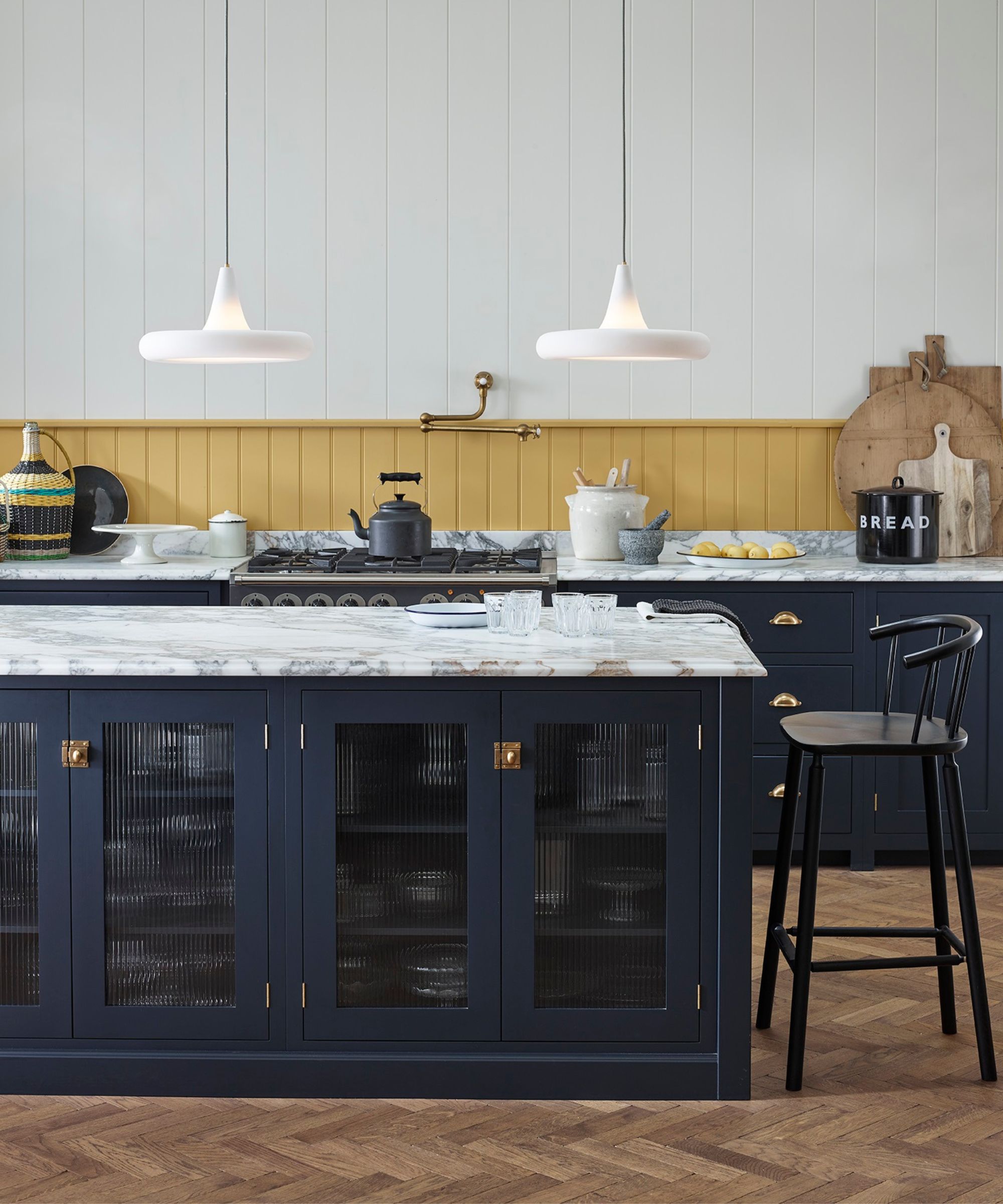Are inset kitchens more expensive? Kitchen planners explain the ins and outs
Inset kitchens certainly look the part, but are they a good idea on your budget?


Inset kitchens are a real stand-out option when redesigning your cook space, making any kitchen look truly bespoke with on-display carpentry and a tailored fit.
However, that level of detail often comes at a price – and are these traditional kitchens worth it?
Here, we asked kitchen designers whether or not inset kitchens will always up the price tag of your kitchen renovations, and they explain what it is that makes this cabinetry choice so special.
Are inset kitchens more expensive?

The short answer is yes – inset kitchen cabinets, also known as 'in-frame' cabinets, are generally more expensive than their overlay counterparts. However, this is for good reason, says Elizabeth Grace, interior designer and founder of Dream Home Making:
‘The meticulous construction technique involved in custom-making inset cabinets lends an air of craftsmanship and finesse to the kitchen, reminiscent of traditional cabinet-making methods, naturally increasing the cost,’ Elizabeth says. ‘This is on top of the premium materials used, which also contribute to the elevated cost.’

Elizabeth Grace is an interior designer and furniture expert. She received her degree in interior Ddsign from the University of Notre Dame. Elizabeth landed her first job as an intern with a leading firm in New York City, learning from some of the city’s top designers. She currently works as an interior designer for both residential and commercial clients.
Besides their craftsmanship (and cost) what is it that actually sets inset kitchens apart?
‘In-frame kitchens are a nod to classical design, reminiscent of the elegant styles that graced homes in the early 1900s. The defining feature of an in-frame kitchen lies in its cabinet structure, where both the cabinet and the potential drawer on top are outlined,’ Alberto N. Parra, designer and showroom manager at DAX International, Kitchen and Baths explains.
Design expertise in your inbox – from inspiring decorating ideas and beautiful celebrity homes to practical gardening advice and shopping round-ups.
‘Imagine a picture frame, with the full carcass forming the frame, the front serving as the Passepartout, and the doors or drawers acting as the picture. This unique arrangement showcases the face of the cabinet and drawer, adding a touch of sophistication and visual intrigue.’
Because of this traditional appeal, this type of cabinetry best suits classic, traditional kitchens, or country kitchens, adds Roman Smolevskiy, home reno expert, and owner of A+ Construction and Remodeling. ‘The elegant, detailed appearance of in-frame cabinets pairs well with kitchens that have a more vintage or timeless appeal,’ Roman says. ‘That said, I've also seen them being used to great effect in more modern settings when blended with contemporary elements, so long as they are balanced correctly with the surrounding room so they do not look out of place.’

This tailored approach to your kitchen doesn't mean that the style is without its flaws, however, as Jennifer Ebert, digital editor (digital) for Homes & Gardens, points out.
‘Inset cabinets, besides their high price tag, come at the cost of less drawer space, and less clearance through the door as a result of the surrounding frame trim. This makes it a little trickier to reach the far corners of your kitchen storage,’ she warns. ‘If you have a small kitchen, this added awkwardness may not be worth it.’
What’s more, inset kitchens can make cleaning a kitchen a little more awkward too, as you have to dust in and around the frames, especially when deep cleaning.

Jen is the Deputy Editor (Digital) of Homes & Gardens online. Before starting this position, she had completed various interior design courses at KLC Design School, as well as working across Ideal Home, LivingEtc, 25 Beautiful Homes and Country Homes & Interiors as an interiors writer.
The deVOL Kitchen: Designing and Styling the Most Important Room in Your Home | $41.85 at Amazon, available to pre-order
For kitchen inspiration, there's no better place to look than a deVOL coffee table book. The new release also has Joanna Gaines' seal of approval.
FAQs
Does a bespoke kitchen add value?
A bespoke kitchen will usually add value to your home thanks to the better quality materials used and increased craftsmanship involved in the process. The result is a kitchen that is built to last and will likely appeal to any future buyers.
What are the three most expensive things in a kitchen remodel?
When planning a kitchen remodel, you will likely find that the cabinets, counters, and appliances take up most of your budget – but for good reason. These are the things we use the most in the space, and need to be able to stand up to the rigors of daily life.
You can often find ways to save on some of the decorative pieces in the kitchen to help prioritize these three areas.
If you are looking for a more high-end kitchen, you don't always have to pick an inset kitchen style, kitchen designer Alberto N. Parra reminds us. ‘Overlay cabinetry can streamline the overall appearance of your kitchen but also offers a more cost-effective solution. With fewer cuts and less finished material, lay-on kitchens present an attractive option for those seeking a contemporary style on a budget,’ he says.
‘Ultimately, the decision rests in your hands. Whether you opt for the timeless charm of in-frame kitchens or the clean lines of lay-on kitchens, each style offers its own unique appeal, contributing to the artistry and functionality of your culinary haven.’

Chiana has been at Homes & Gardens for two years and is our resident 'queen' of non-toxic living. She spends most of her time producing content for the Solved section of the website, helping readers get the most out of their homes through clever decluttering, cleaning, and tidying tips. She was named one of Fixr's top home improvement journalists in 2024.
